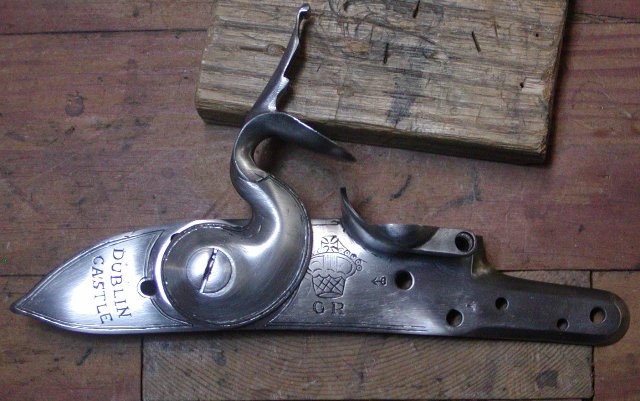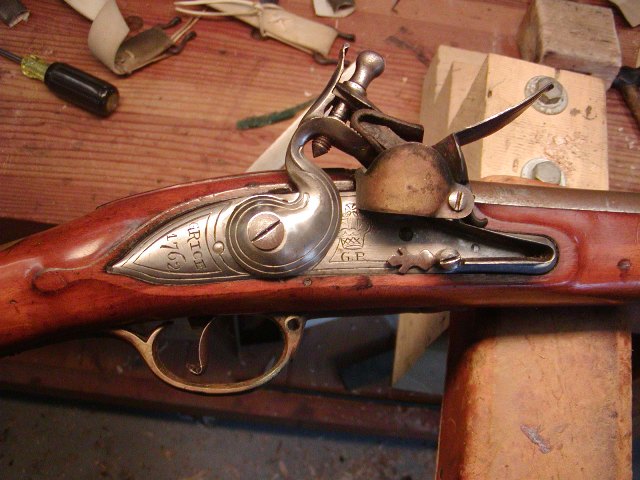Hi Bob,
Thanks for nice comment. The irony in what you wrote about the beaver tails is that those carved details were only on the first pattern (1730) Bess and dropped in the very next pattern. Of the approximately 3.7 million Brown Besses made during its operational career, less than 100,000 had those beaver tails. The way I carved the tails of the lock and side plate panels is found on some Irish and Tower Besses but is much more nicely shaped than the vast majority of Besses. They really did not fuss much over that detail and most were indifferently shaped at best. One thing I did this time was really restrain my fussing over the finish of the gun. I almost always finish these Besses much better than the originals, which often were simply file finished. This time my student and I went at it with files, scrapers, and sandpaper but left a lot of marks and scratches. With a slightly shiny finish, it really looks pretty good. I kind of like it. We also only whiskered the stock once so the surface is not glassy like a higher end gun. On the next one I am going to try and restrain myself even more but it is hard because I like well finished stuff.
dave










